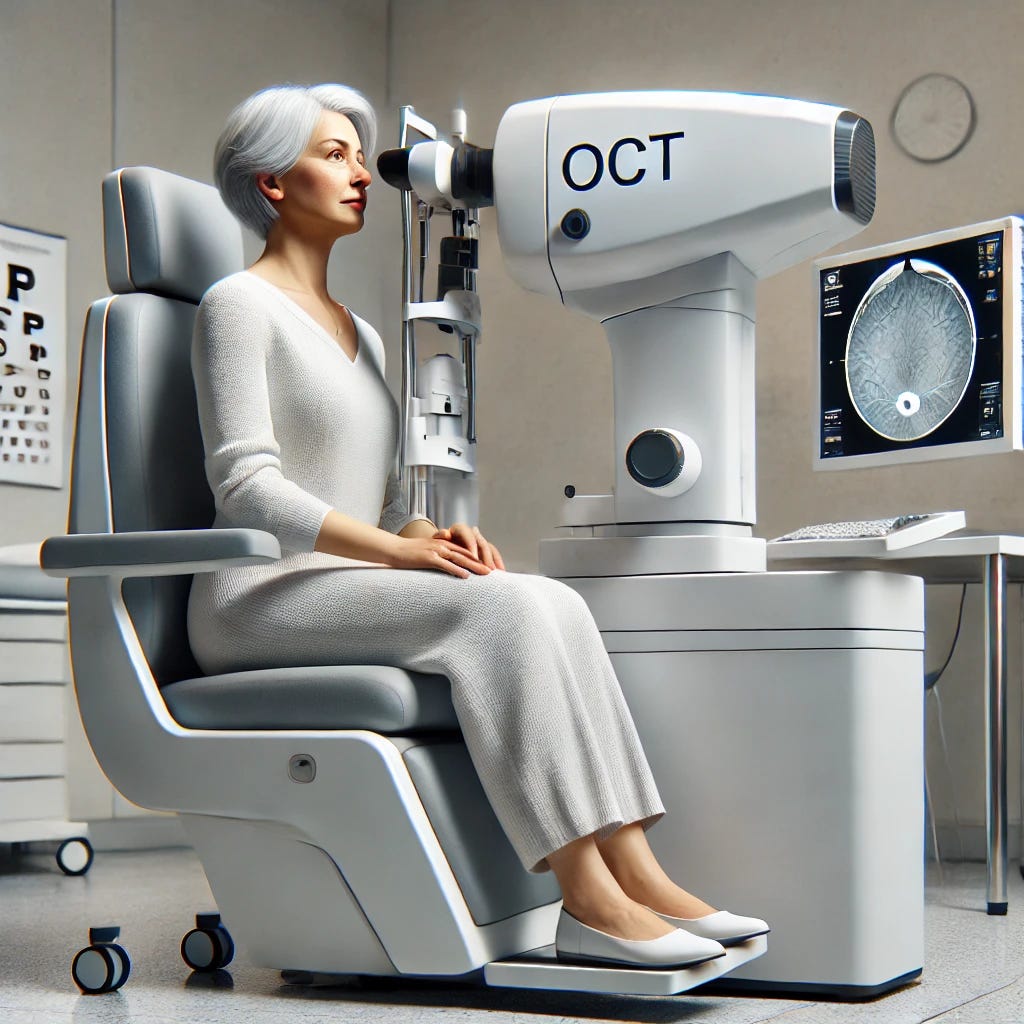The Role of OCT Scans in Diagnosing Wet AMD
Wet age-related macular degeneration (AMD) is a leading cause of vision loss in people over 50. Early detection is critical to preventing severe vision impairment. Optical coherence tomography (OCT) scans have become essential in diagnosing and managing wet AMD, offering precise imaging of retinal changes.
Understanding Wet AMD
Wet AMD occurs when abnormal blood vessels grow beneath the macula, the part of the retina responsible for sharp central vision. These vessels may leak fluid or blood, leading to rapid vision loss. Symptoms include:
Blurred or distorted central vision
Straight lines appearing wavy
Dark spots in central vision
What Is an OCT Scan?
An OCT scan is a non-invasive imaging test that uses light waves to capture detailed cross-sectional images of the retina. This advanced imaging technique allows eye care professionals to observe the retina’s layers and detect abnormalities such as fluid accumulation and retinal thinning.
The Role of OCT in Diagnosing Wet AMD
1. Early Detection
OCT can identify subtle structural changes in the retina, such as fluid or swelling, often before symptoms appear. Early detection is crucial to initiating timely treatments that can prevent further damage.
2. Monitoring Disease Progression
Regular OCT scans provide high-resolution images that allow specialists to monitor disease progression over time. This helps evaluate the effectiveness of ongoing treatments, ensuring they are working optimally.
3. Guiding Treatment Decisions
OCT imaging reveals the extent and location of retinal damage or fluid leakage, helping guide therapies like anti-VEGF injections. These medications target vascular endothelial growth factor, reducing abnormal blood vessel growth and preventing further vision loss.
Advantages of OCT Scans
Non-Invasive: The procedure is painless and doesn’t require incisions or injections.
Quick and Efficient: OCT scans are completed in minutes, often as part of a routine eye exam.
High Resolution: The images provide unparalleled detail, enabling the detection of minute changes in the retina that might be missed with other imaging techniques.
Why Early Detection Matters
The prognosis for wet AMD depends heavily on how early treatment begins. OCT scans make it possible to detect the condition early, monitor its progression, and evaluate treatment success. This can significantly improve long-term outcomes for patients at risk of or diagnosed with wet AMD.




